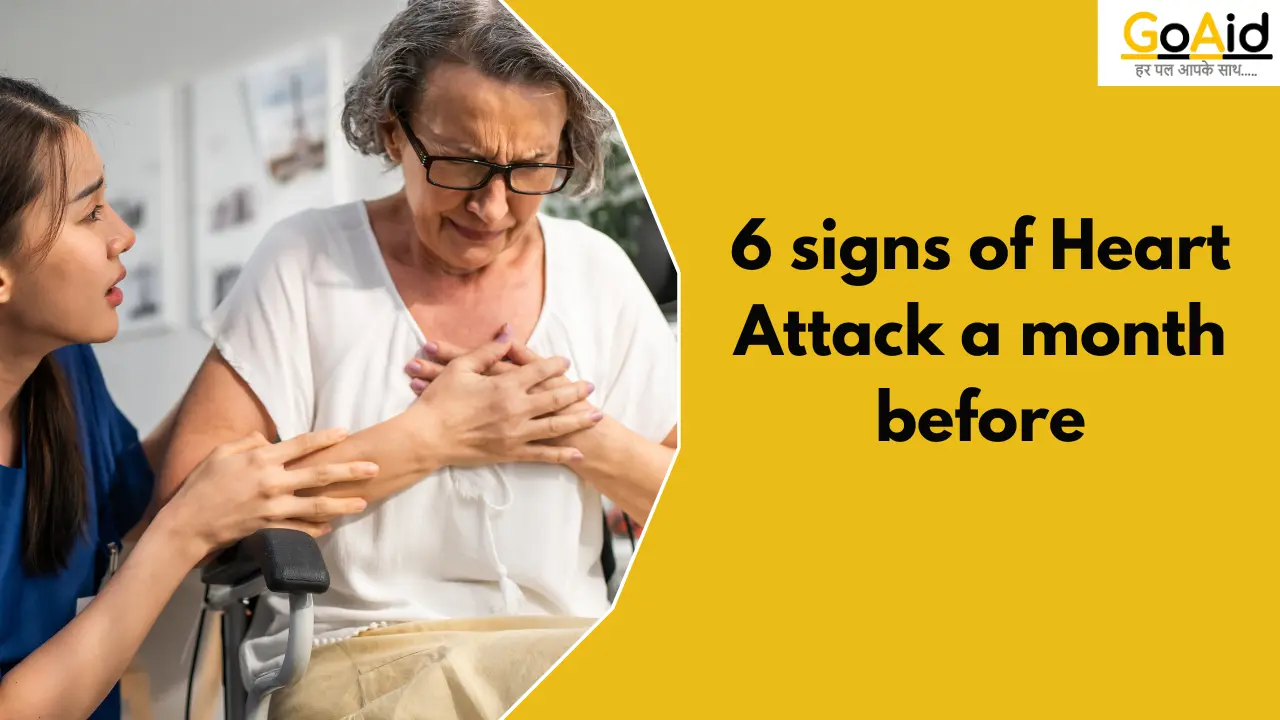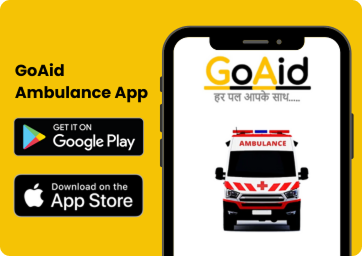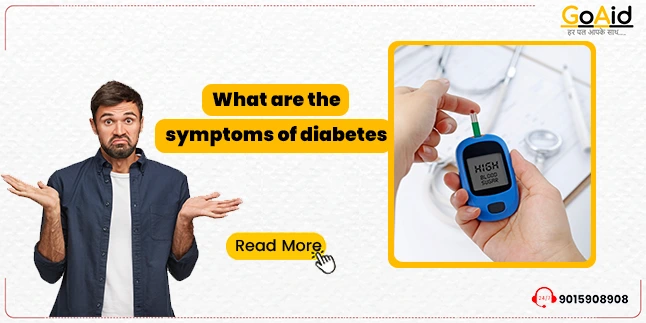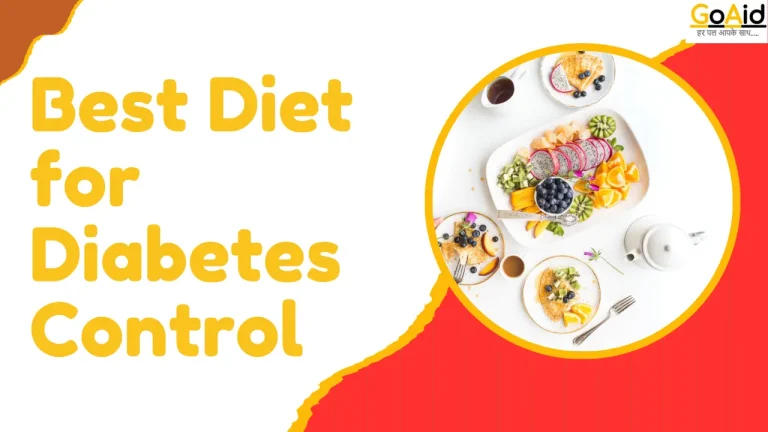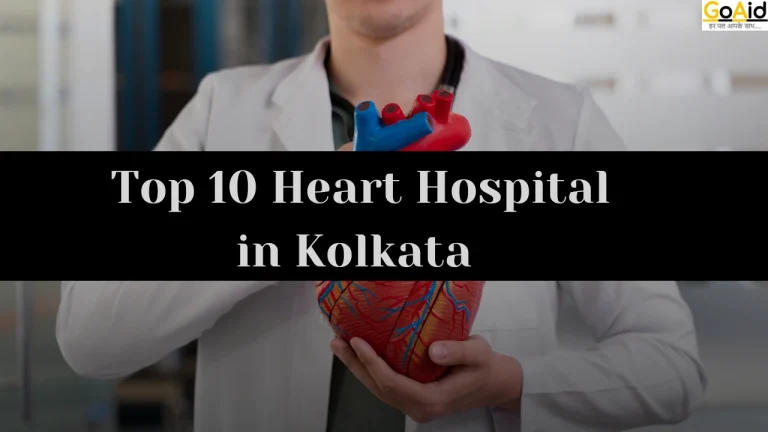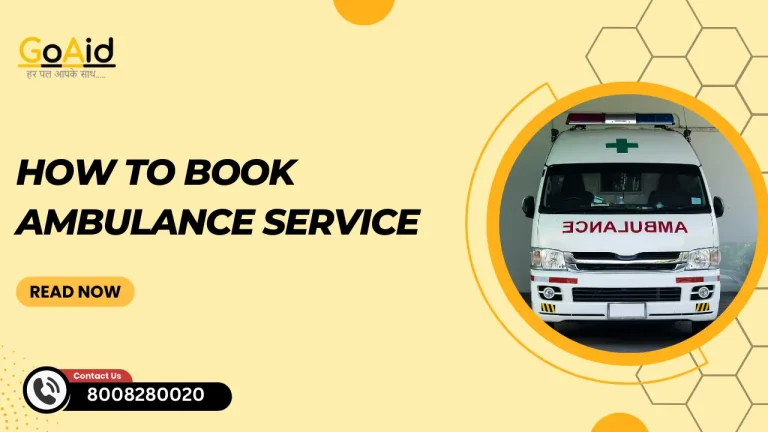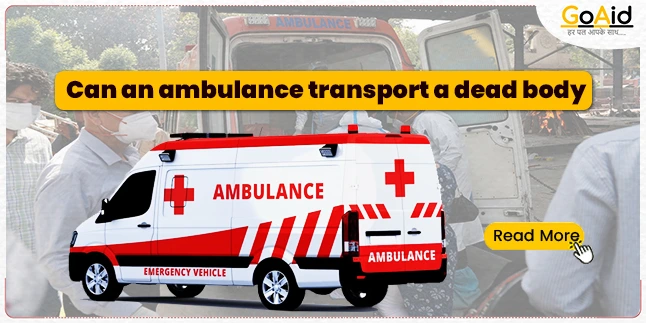According to the World Health Organization, approximately 17.9 million people die every year in the world. This number is huge. This is why scientists & renowned doctors are dedicated to finding the best cure for heart attack.
But, medical assistance or a doctorŌĆÖs guidance can help anyone to save themselves from a heart attack. So, what if we can get to know about the symptoms of a heart attack a month before? Indeed there is a good chance of not dying due to a heart attack. Because, then we can do so many things to prevent it from happening.
This is why, in this blog, we have added the details about 6 signs of heart attack a month before. If you are also here to know about the 6 signs of heart attack a month before, then read this blog to the very end.
So, letŌĆÖs start;
What is the Heart Attack?
A heart attack, which is medically known as a myocardial infarction, is a serious and potentially life-threatening event. This event generally occurs when blood flow to a part of the heart is blocked. This blockage is often caused by a buildup of plaque in the coronary arteries.
This can rupture and form a clot & lead to a sudden interruption in blood flow. If you want to know about the 6 signs of a heart attack a month before, then you must know about the general signs and symptoms of a heart attack for its early detection and prompt medical intervention.
Common signs include chest pain or discomfort, shortness of breath, nausea, sweating, and pain or discomfort in the arms, back, neck, jaw, or stomach. However, it’s important to note that some individuals may experience warning signs in the month leading up to a heart attack.
These signs can include fatigue, difficulty sleeping, chest pain with exertion, indigestion, or heart palpitations. Recognizing these warning signs and seeking medical attention promptly can significantly improve outcomes and reduce the risk of complications associated with a heart attack.
History of Heart Attack
The history of heart attacks dates back centuries. It references symptoms and conditions that resemble what we now understand as myocardial infarction. Ancient civilizations, such as the Egyptians, Greeks, and Romans have documented symptoms similar to heart attacks. However, it wasn’t until more recent times that the understanding of heart attacks as a medical condition began to develop.
In the 18th and 19th centuries, medical pioneers such as William Heberden and John Hunter made significant contributions to the understanding of heart diseases, including heart attacks. Heberden, an English physician, described the classic symptoms of angina pectoris, a condition characterized by chest pain or discomfort due to reduced blood flow to the heart muscle. Hunter, a Scottish surgeon, researched the heart and blood vessels, laying the groundwork for modern cardiology.
Causes of Heart Attack
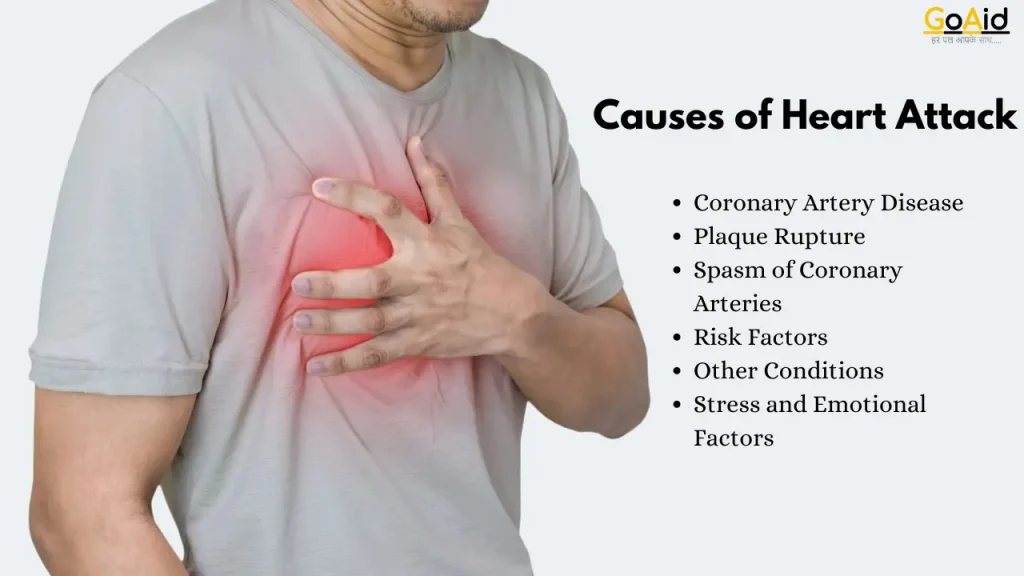
There are many key reasons or causes of the heart attack. We have listed them below:
1. Coronary Artery Disease (CAD)
The most common cause of heart attacks, CAD occurs when the coronary arteries become narrowed or blocked due to the buildup of plaque (atherosclerosis). This restricts blood flow to the heart muscle.
2. Plaque Rupture
Plaque buildup in the coronary arteries can rupture, leading to the formation of a blood clot (thrombus). This clot can partially or completely block blood flow to the heart, causing a heart attack.
3. Spasm of Coronary Arteries
In some cases, the coronary arteries may experience spasms, leading to temporary constriction and reduced blood flow to the heart. This can trigger a heart attack, particularly in individuals with underlying coronary artery disease.
4. Risk Factors
Certain risk factors increase the likelihood of developing coronary artery disease and experiencing a heart attack. These include high blood pressure, high cholesterol, diabetes, smoking, obesity, a sedentary lifestyle, and a family history of heart disease.
5. Other Conditions
Heart attacks can also be caused by other conditions, such as coronary artery dissection (a tear in the artery wall), severe hypertension, cocaine use, and certain autoimmune diseases.
6. Stress and Emotional Factors
Emotional stress or extreme physical exertion can sometimes trigger a heart attack, particularly in individuals with underlying coronary artery disease or risk factors.
General Symptoms of Heart Attack
These are the general symptoms of the heart attack:
- Chest pain: This is the most common symptom of a heart attack. It can feel like pressure, tightness, squeezing, or aching in the chest. The pain may come and go, and it may not be severe.
- Pain or discomfort in other areas of the upper body: This pain can spread to the shoulders, arms, back, neck, jaw, or stomach.
- Shortness of breath: This can occur with or without chest pain. You may feel like you can’t catch your breath, even when you’re at rest.
- Nausea or vomiting: You may feel sick to your stomach or vomit.
- Cold sweat: You may break into a cold sweat, even if you’re not hot.
- Fatigue: You may feel very tired and weak.
- Lightheadedness or dizziness: You may feel like you’re going to faint.
- A sudden feeling of anxiety: You may have a sudden feeling of intense anxiety or a sense of impending doom.
6 signs of Heart Attack a month before
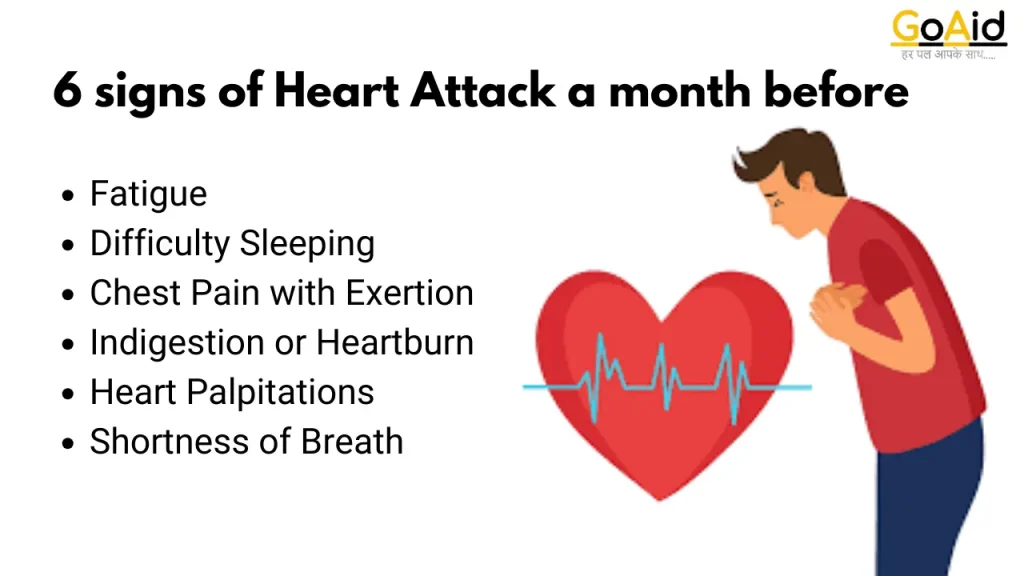
These are the most common 6 signs of a heart attack that can be recognized a month before:
Fatigue
Continuous and unexplained fatigue or feeling unusually tired, even after adequate rest, can be an early warning sign of a heart attack. This fatigue may not necessarily be relieved by rest and may worsen with physical or mental exertion. Fatigue can result from the heart’s reduced ability to pump blood effectively, leading to decreased oxygen delivery to the body’s tissues.
Difficulty Sleeping
Insomnia or difficulty sleeping can occur as a result of various factors leading up to a heart attack. This may include anxiety, stress, discomfort due to symptoms such as chest pain or shortness of breath, or hormonal changes affecting sleep patterns. Pay attention to any changes in sleep quality or difficulty falling or staying asleep, as they could signal underlying cardiovascular issues.
Chest Pain with Exertion
Experiencing chest pain or discomfort during physical activity or exertion, such as exercising or climbing stairs, can be a warning sign of coronary artery disease (CAD) or impending heart problems. This chest pain, known as angina, occurs when the heart muscle doesn’t receive enough oxygen-rich blood due to narrowed or blocked coronary arteries. It typically resolves with rest but may progress to a heart attack if left untreated.
Indigestion or Heartburn
Persistent indigestion, heartburn, or stomach discomfort that doesn’t improve with over-the-counter medications or dietary changes could indicate underlying heart issues. While these symptoms are commonly associated with gastrointestinal problems, they can also occur due to reduced blood flow to the digestive organs, especially in individuals with coronary artery disease.
Heart Palpitations
Irregular or rapid heartbeat sensations, known as heart palpitations, can occur as a result of various factors, including stress, caffeine intake, hormonal changes, or underlying heart conditions. In the context of impending heart problems, palpitations may indicate abnormal heart rhythms (arrhythmias) or increased strain on the heart muscle, potentially leading to a heart attack.
Shortness of Breath
Unexplained shortness of breath or difficulty breathing, especially when it occurs during rest or minimal exertion, may signal underlying heart issues. This symptom can result from fluid accumulation in the lungs (pulmonary edema) due to heart failure, reduced cardiac output, or impaired lung function secondary to heart problems.
Well, these are not guaranteed early signs of heart attack, but the most common early signs of heart attack. Also, recognizing these early signs can be crucial for seeking medical help in time to prevent a heart attack or reduce its severity. If you or someone you know experiences these symptoms, itŌĆÖs important to consult a healthcare provider immediately.
Treatment of Heart Attack
The treatment of a heart attack aims to restore blood flow to the heart, minimize heart muscle damage, and prevent future cardiac events. The treatment strategy typically involves a combination of emergency interventions, medications, and lifestyle changes. Here are the key components of heart attack treatment:
1. Emergency Treatment:
- Call for Help: Immediate medical assistance is crucial. Calling emergency services ensures rapid transport to the hospital and initiation of treatment.
- CPR and AED: If the person is unconscious and not breathing, cardiopulmonary resuscitation (CPR) and the use of an automated external defibrillator (AED) can be lifesaving until professional help arrives.
Also Read: What is CPR & How to Perform CPR
2. Medications:
- Aspirin: Often given immediately to reduce blood clotting and help maintain blood flow through narrowed arteries.
- Thrombolytics (Clot Busters): These drugs dissolve blood clots obstructing blood flow to the heart. They are most effective when administered as soon as possible after the onset of a heart attack.
- Antiplatelet Agents: Medications such as clopidogrel prevent new clots from forming and existing clots from growing.
- Anticoagulants: These drugs, like heparin, reduce the blood’s clotting ability and are often administered in the initial stages of treatment.
- Pain Relief: Morphine or other pain relievers may be used to alleviate chest pain and anxiety.
- Beta-blockers: These reduce the heartŌĆÖs workload and help limit the extent of the damage.
- ACE Inhibitors: These medications help relax blood vessels and lower blood pressure, improving blood flow and reducing the heartŌĆÖs workload.
- Statins: These drugs lower cholesterol levels and help stabilize plaque, preventing further artery blockages.
3. Procedures and Surgeries:
- Angioplasty and Stenting: A procedure where a catheter with a balloon at the tip is inserted into the blocked artery. The balloon is inflated to open the artery, and a stent (a small mesh tube) is placed to keep the artery open.
- Coronary Artery Bypass Grafting (CABG): In this surgery, a blood vessel from another part of the body is used to create a bypass around the blocked coronary artery, restoring blood flow to the heart muscle.
4. Post-Treatment Care:
- Cardiac Rehabilitation: This is a structured program that includes exercise training, education on heart-healthy living, and counseling to reduce stress and improve mental health.
- Lifestyle Changes: Adopting a heart-healthy lifestyle is crucial for recovery and prevention of future heart attacks. This includes quitting smoking, eating a balanced diet low in saturated fats, cholesterol, and sodium, maintaining a healthy weight, exercising regularly, and managing stress.
- Regular Monitoring and Follow-Up: Continuous medical follow-up is essential to monitor heart health, manage risk factors like high blood pressure, high cholesterol, and diabetes, and adjust medications as necessary.
Click here to get ambulance service: GoAid Ambulance Service
How to Prevent the Heart Attack? ŌĆō Top 10 Prevention Tips for Heart Attack
Preventing a heart attack involves adopting a healthy lifestyle and managing risk factors effectively. Here are the top 10 prevention tips for heart attack:
1. Maintain a Healthy Diet
- Eat a balanced diet rich in fruits, vegetables, whole grains, lean proteins, and healthy fats.
- Limit intake of saturated fats, trans fats, cholesterol, salt, and added sugars.
- Incorporate heart-healthy foods such as nuts, seeds, fatty fish (rich in omega-3 fatty acids), and legumes.
2. Exercise Regularly
- Engage in at least 150 minutes of moderate-intensity aerobic exercise, like brisk walking, or 75 minutes of vigorous-intensity exercise, like running, per week.
- Include muscle-strengthening activities on two or more days a week.
3. Maintain a Healthy Weight
- Achieve and maintain a healthy body weight by balancing calorie intake with physical activity.
- Monitor your body mass index (BMI) and aim for a BMI within the normal range (18.5-24.9).
4. Avoid Tobacco Use
- Quit smoking and avoid exposure to secondhand smoke. Smoking damages blood vessels, raises blood pressure, and increases the risk of heart attack.
- Seek support through smoking cessation programs, medications, and counseling.
5. Limit Alcohol Consumption
- If you drink alcohol, do so in moderation. This means up to one drink per day for women and up to two drinks per day for men.
- Excessive alcohol intake can increase blood pressure, contribute to heart disease, and lead to weight gain.
6. Manage Stress
- Practice stress-reducing techniques such as meditation, yoga, deep breathing exercises, and mindfulness.
- Engage in hobbies and activities that you enjoy and find relaxing.
- Ensure adequate sleep and rest to help manage stress levels.
7. Monitor and Control Blood Pressure
- Regularly check your blood pressure and keep it within a healthy range (typically less than 120/80 mm Hg).
- Follow your healthcare providerŌĆÖs recommendations for lifestyle changes and medications to manage high blood pressure.
8. Manage Cholesterol Levels
- Get regular cholesterol screenings and aim for healthy cholesterol levels: LDL (ŌĆ£badŌĆØ cholesterol) should be low, and HDL (ŌĆ£goodŌĆØ cholesterol) should be high.
- Follow dietary recommendations and take prescribed medications to control cholesterol levels.
9. Control Diabetes
- Manage blood sugar levels through diet, exercise, weight management, and medications if necessary.
- Regularly monitor blood glucose levels and follow your healthcare providerŌĆÖs advice to keep diabetes under control.
10. Stay Informed and Get Regular Check-Ups
- Stay informed about heart health and understand your personal risk factors.
- Schedule regular check-ups with your healthcare provider to monitor your heart health, discuss any concerns, and adjust treatment plans as needed.
Also read: Dehydration: Causes, Treatment, Prevention
Conclusion
In conclusion, recognizing the 6 signs of heart attack a month before can be difficult but we have listed the most common symptoms or signs in the blog as ŌĆöfatigue, shortness of breath, chest discomfort, sleep disturbances, indigestion or nausea, and pain in other areas of the body. These can be crucial for early intervention.
While these symptoms are not guaranteed indicators of a heart attack, their presence warrants immediate medical attention. Being vigilant about these potential warning signs in yourself or your loved ones can lead to prompt diagnosis and treatment, ultimately reducing the risk of severe heart damage and improving outcomes. Always consult a doctor if you notice any of these symptoms.
Also, if you are looking for any other answer, related to this topic, feel free to ask that in the comment box. Thank you.

